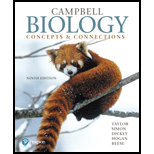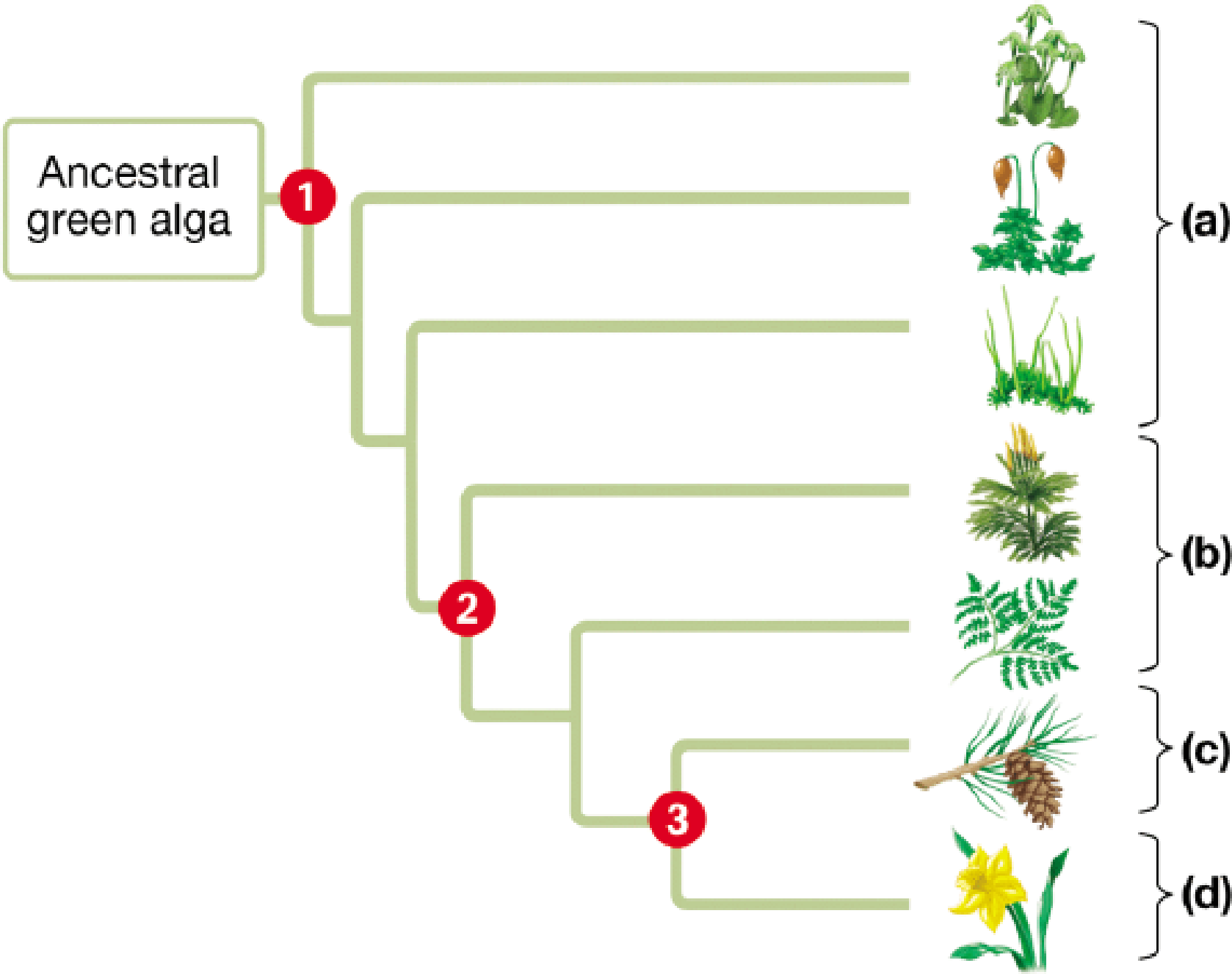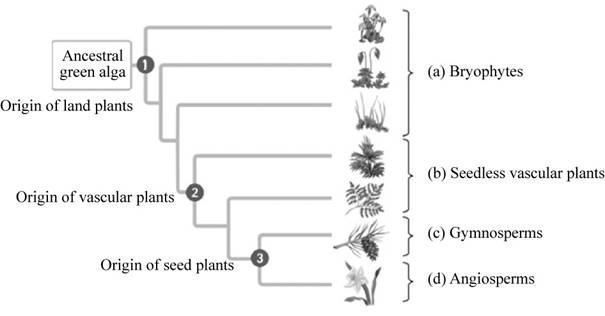
Concept explainers
In this abbreviated diagram, identify the four major plant groups and the key terrestrial adaptation associated with each of the three major branch points.

To determine: The four major plant group and their key terrestrial adaptation associated with each of the three major branch points.
Introduction:
The evolution of plants started with the origin of land plants that included the bryophytes. Land plants developed apical meristem and the embryos. After the land plants, the origin of vascular plants occurred. They involved the seedless fern and mosses. Lastly, the origin of seeded plants occurred. This includes the angiosperms and the gymnosperms.
Answer to Problem 1CC
Pictorial representation: The highlights of plant evolution are depicted in Fig.1.

Fig.1: The major events in plant evolution.
Explanation of Solution
The three distinct adaptations which gave rise to the four major plant groups are:
(1)
Correct answer: The origin of land plants.
Explanation:
The first terrestrial adaptation includes the origin of land plants. Their development included presence of the meristem and the embryos within the parent.
They include the major plant group (a) the bryophytes. The bryophytes are the non vascular plants and they evolved from the green algae about 475 million years ago. It included the development of apical meristem and embryos. For example: Mosses, hornworts, and liverworts. Hence, the correct answer is origin of land plants.
(2)
Correct answer: The origin of vascular plants.
Explanation:
The second adaptation includes the origin of vascular plants. It included the development of vascular tissues that helped the plants to grow tall and move away from the moist environment. They were now able to transport water to the leaves from the roots.
They include plant group (b) the seedless vascular plants. They evolved about 425 million years ago and include the ferns, club mosses and the horsetails. Hence, the correct answer is origin of vascular plants.
(3)
Correct answer: The origin of seed plants.
Explanation:
The third adaptation includes the origin of seed plants. They included the vascular seed plants. The seeds provided protection and dispersion of the embryos.
They include two major groups of plants:
Group (c) Gymnosperms: They include the seeded plants which have their seeds within the cones. They evolved about 360 million years ago. For example: pines, fir and spruce.
Group (d) Angiosperms: They include the vascular seeded plants that bear flowers. They evolved about 360 million years ago along with the gymnosperms. For example: rose, maple trees and oak trees. Hence, the correct answer is origin of seed plants.
Want to see more full solutions like this?
Chapter 17 Solutions
Campbell Biology: Concepts & Connections (9th Edition)
- 22. Which of the following mutant proteins is expected to have a dominant negative effect when over- expressed in normal cells? a. mutant PI3-kinase that lacks the SH2 domain but retains the kinase function b. mutant Grb2 protein that cannot bind to RTK c. mutant RTK that lacks the extracellular domain d. mutant PDK that has the PH domain but lost the kinase function e. all of the abovearrow_forwardWhat is the label ?arrow_forwardCan you described the image? Can you explain the question as well their answer and how to get to an answer to an problem like this?arrow_forward
- Describe the principle of homeostasis.arrow_forwardExplain how the hormones of the glands listed below travel around the body to target organs and tissues : Pituitary gland Hypothalamus Thyroid Parathyroid Adrenal Pineal Pancreas(islets of langerhans) Gonads (testes and ovaries) Placentaarrow_forwardWhat are the functions of the hormones produced in the glands listed below: Pituitary gland Hypothalamus Thyroid Parathyroid Adrenal Pineal Pancreas(islets of langerhans) Gonads (testes and ovaries) Placentaarrow_forward
 Biology (MindTap Course List)BiologyISBN:9781337392938Author:Eldra Solomon, Charles Martin, Diana W. Martin, Linda R. BergPublisher:Cengage Learning
Biology (MindTap Course List)BiologyISBN:9781337392938Author:Eldra Solomon, Charles Martin, Diana W. Martin, Linda R. BergPublisher:Cengage Learning Concepts of BiologyBiologyISBN:9781938168116Author:Samantha Fowler, Rebecca Roush, James WisePublisher:OpenStax College
Concepts of BiologyBiologyISBN:9781938168116Author:Samantha Fowler, Rebecca Roush, James WisePublisher:OpenStax College Biology: The Dynamic Science (MindTap Course List)BiologyISBN:9781305389892Author:Peter J. Russell, Paul E. Hertz, Beverly McMillanPublisher:Cengage Learning
Biology: The Dynamic Science (MindTap Course List)BiologyISBN:9781305389892Author:Peter J. Russell, Paul E. Hertz, Beverly McMillanPublisher:Cengage Learning Biology 2eBiologyISBN:9781947172517Author:Matthew Douglas, Jung Choi, Mary Ann ClarkPublisher:OpenStax
Biology 2eBiologyISBN:9781947172517Author:Matthew Douglas, Jung Choi, Mary Ann ClarkPublisher:OpenStax





